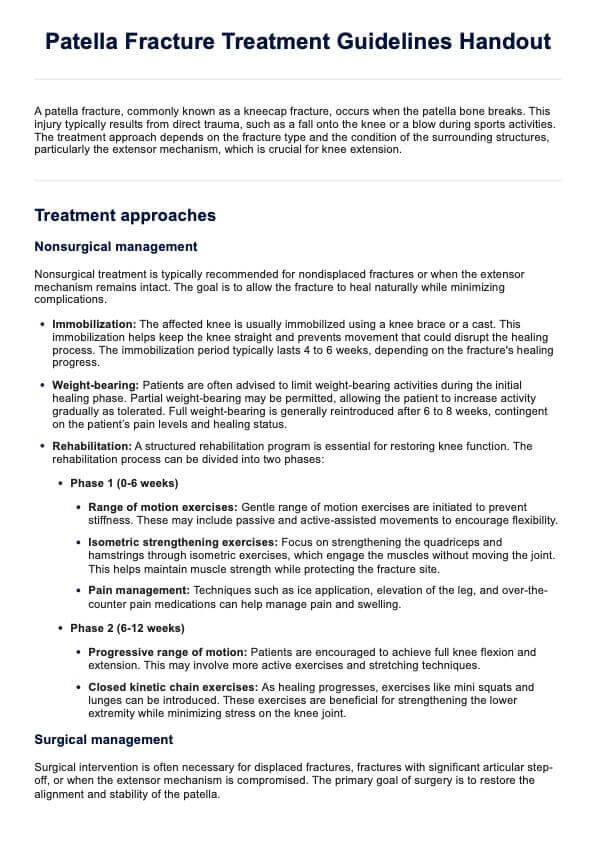The fastest way to heal a fractured patella involves proper immobilization, possibly surgery if necessary, and adherence to a structured rehabilitation program that includes physical therapy to restore mobility and strength.

Patella Fracture Treatment Guidelines Handout
Learn more about our comprehensive Patella Fracture Treatment Guidelines Handout for effective fracture management, from diagnosis to recovery.
Patella Fracture Treatment Guidelines Handout Template
Commonly asked questions
After a knee fracture, it is crucial to avoid putting weight on the injured leg, follow the doctor's instructions regarding brace or cast care, and engage in recommended physical therapy exercises to aid recovery and prevent stiffness.
Risk factors for patella fractures include participation in high-impact sports, previous knee injuries, osteoporosis, and conditions that weaken bones or increase the likelihood of falls, such as neurological disorders or impaired balance.
EHR and practice management software
Get started for free
*No credit card required
Free
$0/usd
Unlimited clients
Telehealth
1GB of storage
Client portal text
Automated billing and online payments











